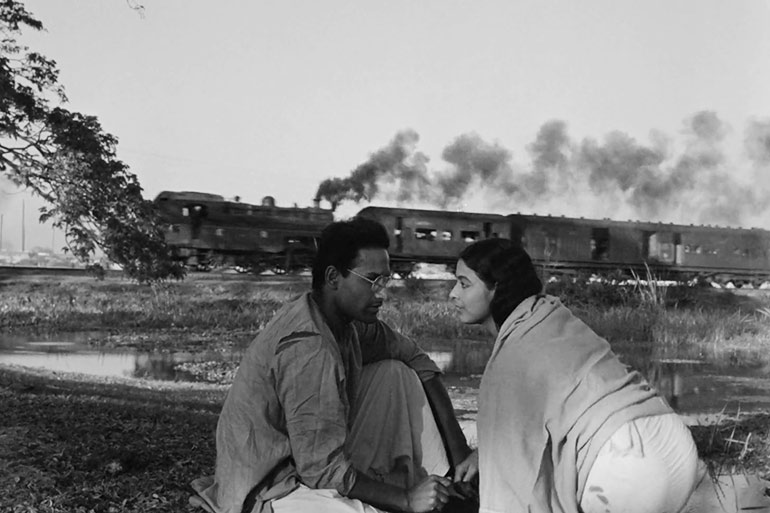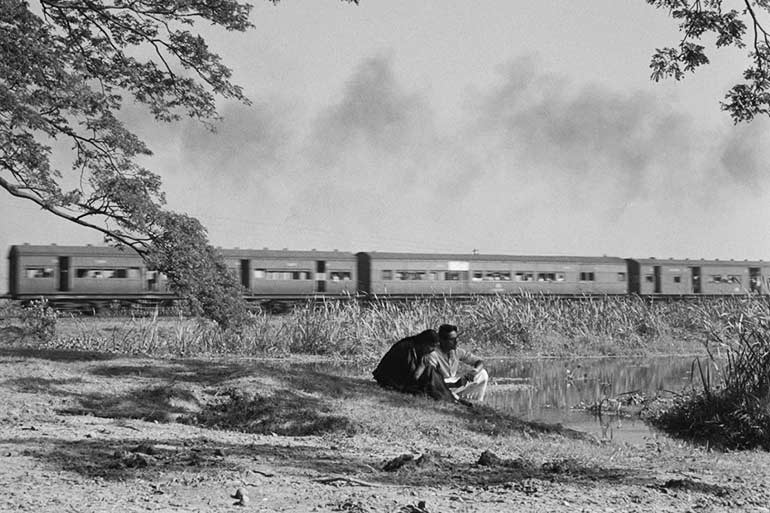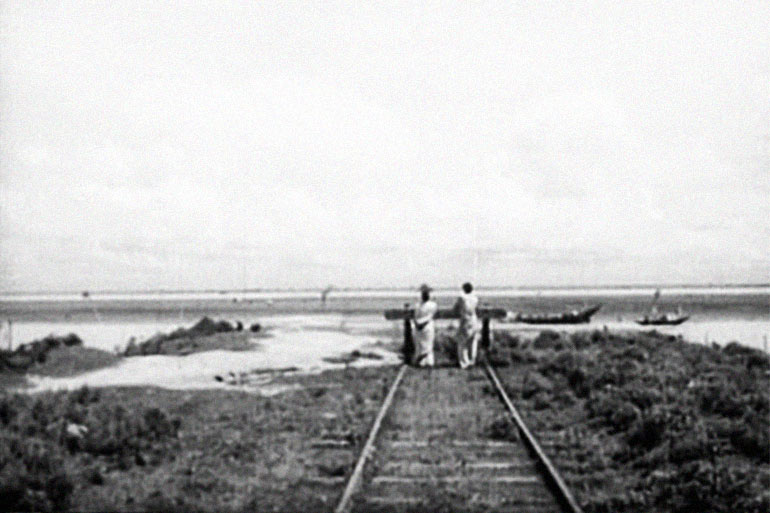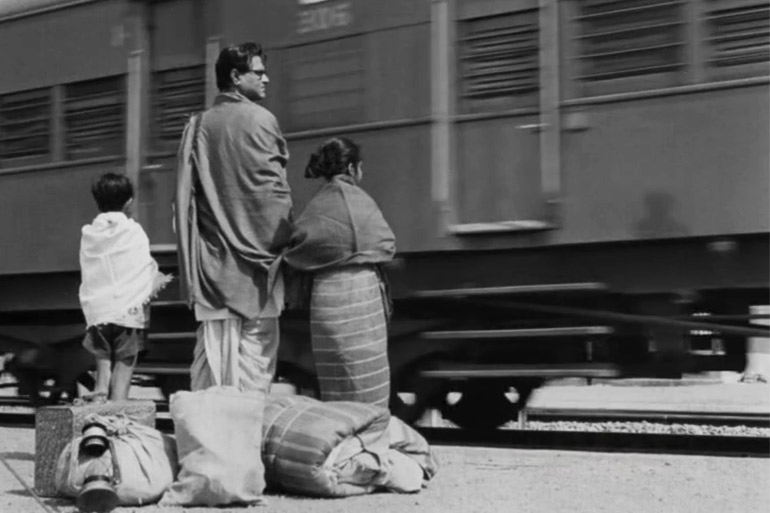Ghatak’s trains: Motion, memory, and exile - GetBengal story

When I was a child, every time I saw a train, it made me think of going on a trip. Even today, whenever a train passes by, the first thought that comes to mind is travel — or the feeling that this train is taking me home. The gleaming, rhythmic sound of a train creates a strange rush of dopamine in the brain. A distracted mind suddenly becomes restless and full of life. French essayist and philosopher Gilles Deleuze, in Cinema 1, even compares the movement of cinema directly to the motion of a train. The journey of a train is that first movement which brings together both the frame and dynamism at once — an ever-moving landscape. (Ritwik Ghatak’s films)
But there was a time in Indian history when trains also carried messages of reconciliation. When we watch Ritwik Ghatak’s films, we repeatedly encounter the presence of trains. The train itself becomes a MacGuffin in Ghatak’s cinema. This calls for a brief explanation of the term. It was popularised by American filmmaker Alfred Hitchcock: a MacGuffin is an object that holds a special meaning within the plot of a story or film. In Ghatak’s films, that meaning is displacement — in some cases, even uprootedness. (Ritwik Ghatak’s films)

There will be no return home. This country is now the new home. Ghatak brings back this idea again and again across almost all his films. Excluding his first two works — Nagarik and Ajantrik — displacement appears throughout the rest of his oeuvre. That is why he continually needs the MacGuffin. If we look back at Partition history, we can see the deep significance of trains — the trains that carried people away from their homelands, uprooted and exiled; the trains that brought back dead bodies; the trains that drew boundaries between two Bengals. But is the train the only symbol of displacement? (Ritwik Ghatak’s films)
In Meghe Dhaka Tara, we see the train right at the beginning. After that iconic long shot, when we first see Nita and Shankar in a composite frame, we also see a train rushing across the far edge of the open landscape. The composition makes it appear as though the train is an embodiment of Nita’s thoughts — just as the scriptures say that the world is a manifestation of the mind of Mahamaya. So, what does this mean? Is the train merely a symbol of displacement? Perhaps not. In Meghe Dhaka Tara, the train at times stands for displacement, at times becomes a carrier of life, sometimes a link between lovers and sometimes the distance between them. (Ritwik Ghatak’s films)

In Komal Gandhar, that train becomes the symbol of the cry of the displaced. “Dohai Ali” — a collective scream. The lament of history, shaking even the present. But that upheaval crashes into the buffer. The train cannot go beyond. Notice this difference: in Meghe Dhaka Tara, the train captures the flow of time as the refugees who have crossed over attempt to build their fragmentary lives. Yet in Komal Gandhar, that life seems repeatedly held back, unable to cross into the other Bengal. Standing on the banks of the Padma, both Bhrigu and Anusuya wonder how they will ever return to their childhood, their lost homeland. But the train will never cross again. Twice we see references to trains and tracks in Komal Gandhar. Through them, we witness a grand narrative of Ghatak’s life—set in the rugged terrain of West Bengal and along the Padma’s edge. At the very end, Bhrigu proposes to Anusuya right beside the railway line — as though the film, accepting the ironies of history, offers its characters a moment of resolution. The railway track that once symbolised division becomes the embodiment of connection.
Then comes the train in Subarnarekha. Ishwar must leave Kolkata and go to a small place near Ghatshila called Chatimpur. He too is a displaced man, responsible for his motherless sister Sita and the orphan Abhiram. Here, the train becomes the carrier of life and time. In Subarnarekha, the train acts as a MacGuffin — almost like a time machine. Through this time machine, Ghatak transports his audience deep into Bangladesh, to witness a new Ramayana. The speed of the train is electric — jump cuts blending with whip pans. Ishwar and Haraprasad shift to the racetrack, and the electric sound of the train transforms into Sita’s anguished cry — “Aa!”

What is fascinating is that even though it functions as a MacGuffin, Ghatak internalises the symbol so deeply within his frames that it gives his films a unique identity in cinematic history — much like Ramanujan in mathematics. Although Satyajit Ray used trains earlier, Ghatak elevated them to a different lyrical dimension. His involvement in the communist movement forged a special relationship with railway stations — as he worked as a special correspondent during that period. The refugee-filled platforms, families arriving in the dead of night — these images come alive vividly in Bari Theke Paliye, where Kanchan first arrives at Sealdah station and seems to witness the same scene unfold before him.
Across the films Ghatak made during his lifetime, one central theme emerges consistently — displacement. As a poet of his time, he felt it was his utmost responsibility to speak of this poetry of displacement.
Note:
Translated by Krishnendu Mitra
To read the original Bengali article, click here.











